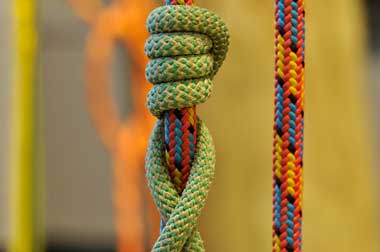Selecting the right friction hitch cord can be a challenge.
Climbers need to consider many properties before they invest in a cord; including heat resistance, construction, strength, sensitivity, length, number of wraps, memory and knot type. And of course the diameter of the cord.
Paolo Baveresco from Treevolution produced a document back in 2005 titled 'Ropes and Friction Hitches used in Tree Climbing Operations' and the content is still relevant today.
Treevolution conducted a series of tests to determine the combined optimum performance of climbing lines, friction hitches and friction cords.
Regarding friction cord diameter, Treevolution says "friction hitch cords of 2-3mm diameter less than that of the lifeline performed most reliably." (in their tests).
That means, in theory at least, a 12mm diameter climbing line should have a 10mm friction cord and an 11mm climbing line a 8mm friction cord.
Once you read the full article you will find it is not quite as simple as the statement above!
Cords of varying diameters behave differently relative to the knot tied (friction hitch) and the climbing line employed. For example 8mm cord proved to be very reliable when tied in the Valdotain (French prusik).
Mr Baveresco goes on to say this (keep reading, this part is important):
"In using these smaller diameter (friction) cords it should be emphasized that their satisfactory use can depend on the increased knowledge and responsibility that comes with extended practice.
They should, therefore, not be considered to be suitable for use by operatives who have not demonstrated the necessary experience and understanding by attending, and achieving the objectives of, an advanced techniques course that includes instruction in the use of friction hitches such as the Valdotain (French prusik) and Helical."
Loosely translated - if you have no experience with these knots get expert advice! Now! Before you leave the ground. Please!

